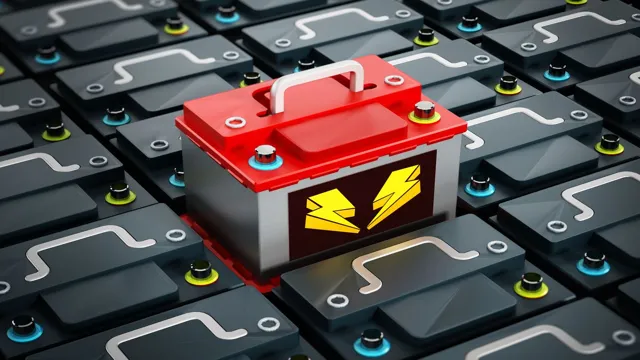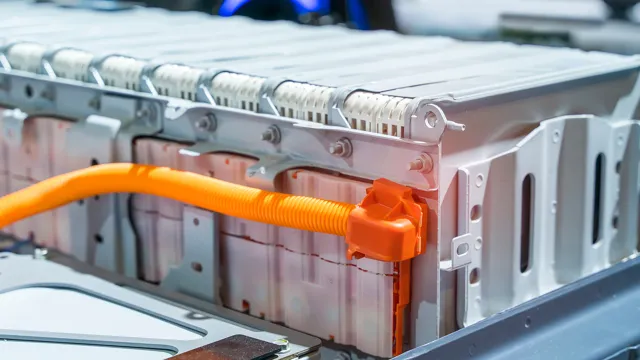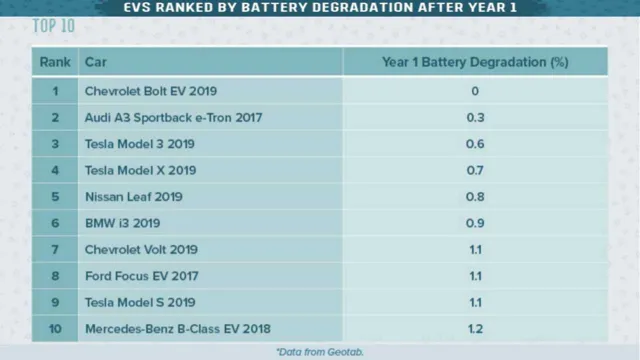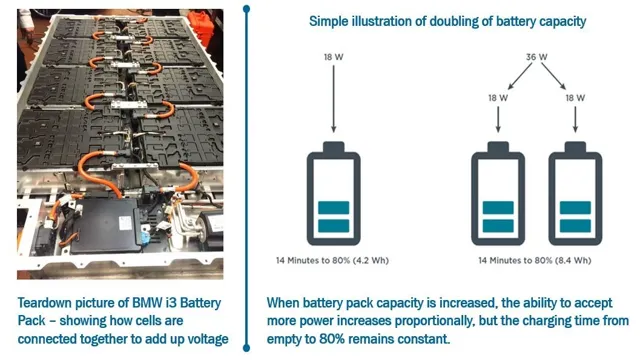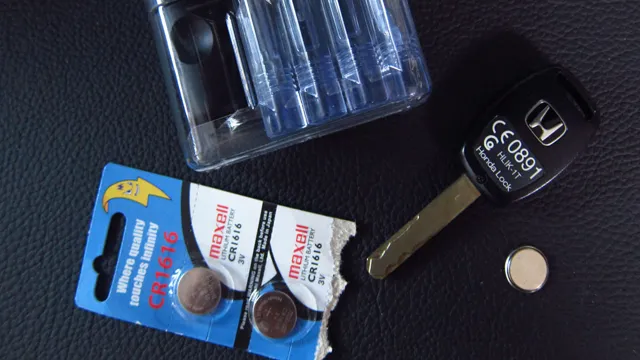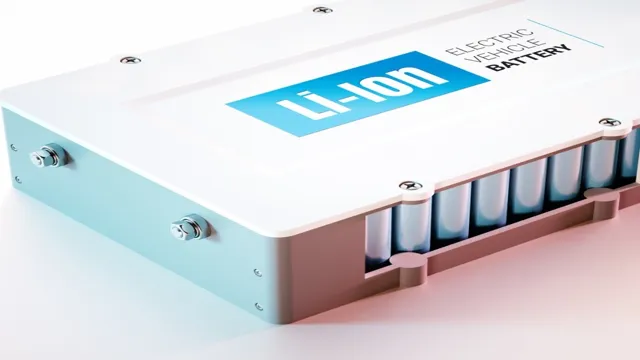Power Up Your Ride: Uncovering the Revolutionary Materials Used in Electric Car Batteries
Electric cars have been a topic of fascination for the past few years. The prospect of a car that doesn’t rely on gasoline or diesel fuel is an exciting one for anyone with an interest in sustainability, eco-friendliness, or just good old-fashioned efficiency. One of the most important components of any electric car is the battery.
Without an excellent battery, a vehicle simply isn’t going to go very far. But what are these batteries made of, and how do they work? In this blog post, we’ll take a look at the materials that go into an electric car battery and the role these materials play in powering the car.
Lithium-ion Batteries
When we think of electric cars, one of the first things that come to mind is the battery. Lithium-ion batteries are the most commonly used batteries in electric cars today due to their high energy density and long lifespan. These batteries are composed of cathodes, anodes, separators, and electrolytes, all of which work together to produce a flow of electrons.
The most common materials used in the cathode of these batteries are cobalt, nickel, and manganese, while the anode is typically made from graphite. However, researchers are constantly exploring new materials that can further improve the performance of lithium-ion batteries, such as silicon, sulfur, and even seaweed. As the demand for electric cars continues to grow, advancements in electric car batteries materials will have a significant impact on the industry’s future.
Composition of a Lithium-ion Battery
Lithium-ion batteries are the most popular type of rechargeable batteries used in many electronic devices, including laptops, smartphones, and electric vehicles. These batteries use lithium ions to store and release electrical energy. The key components of a lithium-ion battery include a positive electrode made from a metal oxide, a negative electrode made from carbon, and a separator that keeps the electrodes apart to prevent short circuits.
The electrolyte solution in the battery conducts lithium ions between the electrodes during the charge and discharge cycles. Most of the lithium-ion batteries use a cobalt-based chemistry because it offers high energy density and long cycle life. However, cobalt is expensive and toxic, so researchers are exploring other chemistries such as nickel-manganese-cobalt (NMC) and lithium-iron-phosphate (LFP) for more sustainable and eco-friendly batteries.
Lithium-ion batteries are compact, reliable, and efficient, making them the preferred choice for many applications.
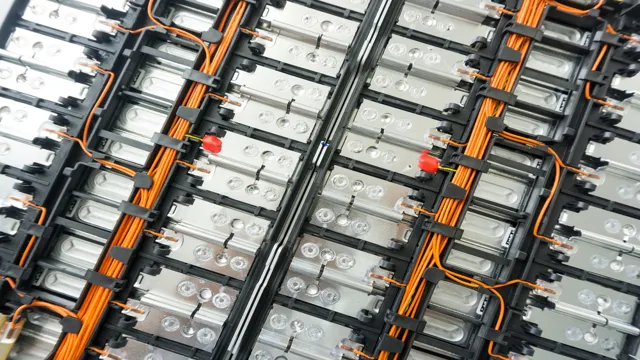
Advantages of Lithium-ion Batteries
Lithium-ion batteries are the future of energy storage technology. These batteries have several advantages compared to traditional lead-acid batteries. One of the primary benefits of lithium-ion batteries is their high energy density, meaning they can store more energy in a smaller size, making them ideal for use in portable electronic devices like smartphones and laptops.
Additionally, lithium-ion batteries have a longer lifespan than lead-acid batteries, which can last for several years with proper care and maintenance. They are also more environmentally friendly, as they do not contain toxic heavy metals like lead and cadmium. Overall, lithium-ion batteries are a more reliable and efficient alternative to lead-acid batteries, making them the preferred choice for many applications, from consumer electronics to electric vehicles.
Other Battery Materials
Apart from the commonly used lithium-ion battery materials, there are several other materials that can be used to make electric car batteries. Some of the potential materials include solid-state batteries, lithium-sulfur batteries, and sodium-ion batteries. These materials offer advantages such as higher energy density, lower cost, and improved sustainability.
The development of solid-state batteries aims to replace liquid electrolytes with solid ones to enhance safety and energy density. On the other hand, lithium-sulfur batteries offer high energy density, low cost, and abundant resources. Sodium-ion batteries have the potential to rival lithium-ion batteries in terms of performance and offer a more sustainable solution.
However, these materials are still under development, and it may take some time before they become commercially viable for the electric car industry. Nonetheless, the research and development of alternative battery materials show promising results and may lead to a shift from lithium-ion batteries in the near future.
Nickel-metal Hydride (NiMH)
NiMH batteries, also known as Nickel-metal Hydride batteries, are a popular choice for many electronic devices due to their high energy density and environmentally-friendly attributes. They are widely used in portable electronic devices like digital cameras, MP3 players, and toy cars. While NiMH batteries are similar to their predecessor, the Nickel Cadmium (NiCd) batteries, they have a higher capacity, less toxic components, and are more efficient.
Compared to Lithium-ion batteries, NiMH batteries have a lower energy density and are heavier but are more cost-effective and easier to dispose of. One of the biggest challenges with NiMH batteries is their susceptibility to self-discharge, which means they lose their charge over time. To overcome this drawback, modern NiMH batteries have been developed with improvements to their chemistry, allowing for better performance and longer life span.
Overall, NiMH batteries are a reliable and environmentally sound alternative to other battery materials, making them a popular choice in many devices.
Lead-acid Batteries
When it comes to batteries, lead-acid may be the most well-known type of battery, but there are other materials used as well. For example, lithium-ion batteries are becoming increasingly popular due to their ability to hold more charge and their efficiency. Another material used in batteries is nickel-cadmium, which has been used for decades and is known for its reliability and durability.
Some newer types of batteries use materials such as nickel-metal hydride, which provide a similar level of power as nickel-cadmium, but with a longer lifespan. Other materials such as zinc-carbon and alkaline are also used in smaller, disposable batteries. Each type of battery material has its own advantages and disadvantages, and choosing the right one depends on the specific needs and requirements of the application.
Solid-state Batteries
Solid-state batteries are becoming a hot topic in the world of technology, particularly in the field of electric vehicles. However, there are other battery materials out there that also show promise. Lithium-sulfur batteries, for example, have the potential to provide even higher energy density than solid-state batteries, while being more cost-effective.
Zinc-air batteries are another alternative, which are already being used in hearing aids and other small electronics. These batteries use oxygen from the air to generate electrical energy, which makes them lightweight and long-lasting. While solid-state batteries are definitely a game-changer, it’s important to keep an eye on other materials in the battery race as well.
Who knows what surprising breakthroughs we might see in the near future?
Sustainability of Battery Materials
Electric cars are an eco-friendly way to travel, helping to reduce our carbon footprint. However, the sustainable production of electric car batteries materials is just as important as the cars themselves. The most commonly used battery materials, such as lithium, nickel, and cobalt, are found in finite quantities on our planet.
This means that their sourcing has the potential to cause environmental damage and human rights concerns. However, researchers are exploring alternative materials such as sodium and magnesium that can be sourced in a more sustainable and ethical way. Additionally, recycling methods for used batteries are being developed to recover valuable materials and prevent them from being disposed of in landfills.
As the demand for electric vehicles continues to increase, ensuring the sustainability of battery materials is crucial for the long-term health of our planet.
Recycling of Battery Materials
As the world moves towards a greener future, it’s becoming increasingly important to focus on the sustainability of various industrial processes. The production and disposal of batteries, for instance, have significant environmental implications. However, by recycling the materials used in batteries, we can reduce their impact on the environment.
When batteries are recycled, the materials such as lead, cadmium, and nickel that are often used in their production can be recovered. These materials can then be used to manufacture new batteries or other products. By doing so, we reduce the demand for virgin materials, which in turn reduces the impact on the environment.
Additionally, recycling batteries helps avoid the release of hazardous materials into the environment, minimizing the risk of contamination. Overall, recycling battery materials is crucial for a sustainable future, and it’s up to us to do our part in ensuring that we minimize our impact on the planet.
Use of Sustainable Materials in Electric Car Batteries
“Electric Car Batteries” Electric car batteries are becoming more sustainable with the use of eco-friendly materials. These materials include nickel, cobalt, and lithium, which are all recyclable and have a lower impact on the environment than traditional battery materials. Additionally, recycled materials are being used in the production of electric car batteries, reducing the need for new raw materials and further decreasing their environmental impact.
The use of these sustainable materials not only benefits the environment but has also resulted in improved battery performance, allowing for longer distances to be traveled on a single charge. With the rise in popularity of electric vehicles, there is a growing need for sustainable battery materials, and the industry is moving towards a more eco-friendly future. The constant advancements in technology and research are paving the way for even more sustainable battery options in the future.
So the next time you plug in your electric car, know that you are helping to reduce your carbon footprint and contributing to a more sustainable future.
Future of Electric Car Batteries
The future of electric car batteries largely hinges on the materials used to manufacture them. Scientists and researchers have been exploring and testing various materials to make electric car batteries more efficient, durable, and cost-effective. Currently, electric car batteries mostly use lithium-ion technology, which has been in demand due to its high energy density and long life.
However, researchers are exploring other materials such as solid-state batteries, hydrogen fuel cells, and graphene batteries to improve the performance of electric cars. Solid-state batteries use solid electrolytes instead of liquid electrolytes, making them safer and less prone to catching fire. Hydrogen fuel cells offer longer ranges and faster refueling times, while graphene batteries offer higher energy density, fast charging capability, and less weight.
As research and innovation continue in the field of electric car batteries, we can expect more breakthroughs and advancements in materials that will make electric cars more accessible and sustainable for the future.
Conclusion
In conclusion, the future of electric cars is bright as the demand for environmentally-friendly options continues to grow. The materials used in electric car batteries, such as lithium, cobalt, and nickel, play a crucial role in the performance and longevity of these vehicles. However, just like any relationship, a balance must be struck between the benefits and drawbacks of these materials.
As we continue to innovate and explore alternative options, we must acknowledge the trade-offs and choose wisely. So, buckle up and join the journey towards a sustainable future with electric cars and their batteries – let’s power up and drive towards a greener tomorrow!”
FAQs
What are the most common materials used for electric car batteries?
The most common materials used for electric car batteries are lithium-ion, nickel-metal hydride, and lead-acid.
How does the choice of battery material affect the performance of an electric car?
The choice of battery material can affect the performance of an electric car in terms of energy density, charging time, weight, and cost.
Why are lithium-ion batteries popular for electric cars?
Lithium-ion batteries are popular for electric cars due to their high energy density, low self-discharge rate, and long lifespan.
Are there any sustainable or eco-friendly materials being used for electric car batteries?
Yes, some sustainable materials being used for electric car batteries include recycled metals, bio-based materials, and solid-state batteries.

